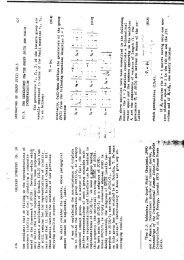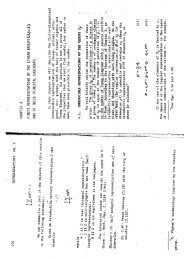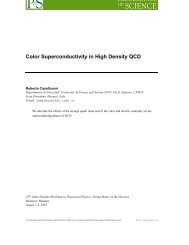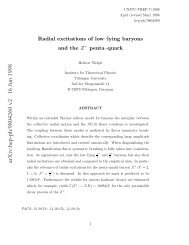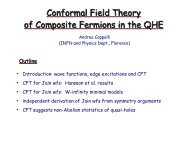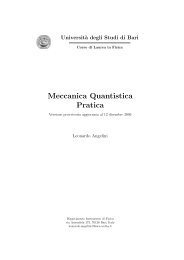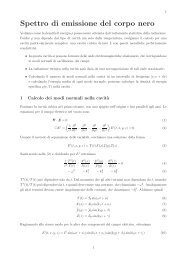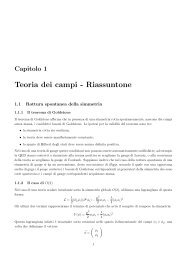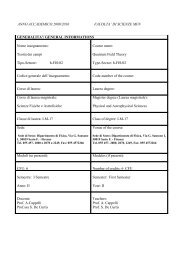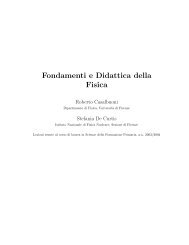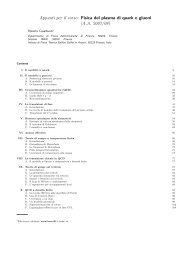entropia di entanglement in teorie invarianti conformi bidimensionali
entropia di entanglement in teorie invarianti conformi bidimensionali
entropia di entanglement in teorie invarianti conformi bidimensionali
You also want an ePaper? Increase the reach of your titles
YUMPU automatically turns print PDFs into web optimized ePapers that Google loves.
CAPITOLO 1. TEORIE DI CAMPO INVARIANTI CONFORMI 10<br />
Ciò segue dalla possibilità <strong>di</strong> prendere il limite |z| → ∞ nel contorno C e dall’<br />
andamento 〈T (z)X〉 ∼ 1<br />
z 4 per z → ∞ nella (1.22).<br />
1.2.3 OPE del tensore energia impulso e carica centrale<br />
Discutiamo le conseguenze pr<strong>in</strong>cipali della (1.22). Imme<strong>di</strong>atamente segue la OPE<br />
che fornisce una def<strong>in</strong>izione alternativa <strong>di</strong> campo primario:<br />
T (z)φ(w) ∼<br />
h<br />
1<br />
φ(w) +<br />
(z − w) 2 (z − w) ∂wφ(w) + regolari per z→ w. (1.26)<br />
Inoltre risulta che T (z) <strong>di</strong>mensionalmente ha pesi <strong>conformi</strong> h=2 e ¯ h=0. Esso tutta-<br />
via non è un campo primario e la più generale OPE priva <strong>di</strong> costanti <strong>di</strong>mensionate<br />
che ci si puo’ attendere è:<br />
T (z)T (w) ∼ c/2 2<br />
1<br />
+ T (w) +<br />
(z − w) 4 (z − w) 2 z − w ∂wT (w) + regolari. (1.27)<br />
Questa def<strong>in</strong>isce un nuovo parametro della teoria conforme, la carica centrale c: il<br />
suo valore <strong>di</strong>pende dal modello, ad esempio per una teoria bosonica libera c = 1.<br />
Si noti che:<br />
〈T (z)T (w)〉 = c<br />
2 (z − w)−4 , (1.28)<br />
ne segue che c è reale e positiva <strong>in</strong> una teoria unitaria, dove questo correlatore è<br />
def<strong>in</strong>ito positivo.<br />
Poiché T (z) non è un campo primario la sua regola <strong>di</strong> trasformazione per z →<br />
w(z) non è la (1.13), la forma <strong>in</strong>f<strong>in</strong>itesima è comunque dettata dalla identità <strong>di</strong><br />
Ward, o equivalentemente dalla (1.27). Risulterà:<br />
<br />
δεT (z) =<br />
C<br />
dw T (w)T (z) = c<br />
12 ∂3 zε(z) + (2∂zε + ε∂z)T (z). (1.29)



